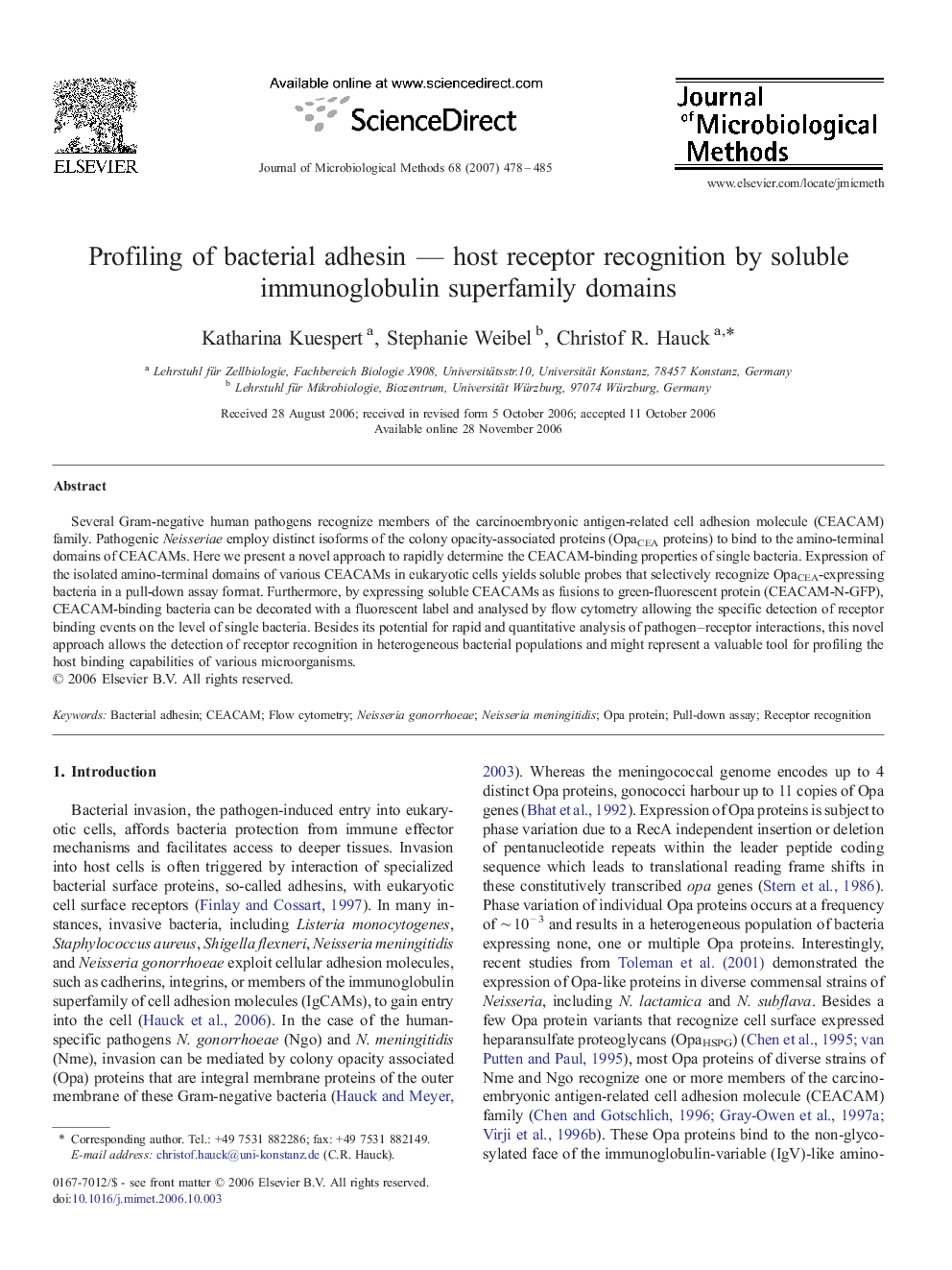| Article ID | Journal | Published Year | Pages | File Type |
|---|---|---|---|---|
| 2091223 | Journal of Microbiological Methods | 2007 | 8 Pages |
Several Gram-negative human pathogens recognize members of the carcinoembryonic antigen-related cell adhesion molecule (CEACAM) family. Pathogenic Neisseriae employ distinct isoforms of the colony opacity-associated proteins (OpaCEA proteins) to bind to the amino-terminal domains of CEACAMs. Here we present a novel approach to rapidly determine the CEACAM-binding properties of single bacteria. Expression of the isolated amino-terminal domains of various CEACAMs in eukaryotic cells yields soluble probes that selectively recognize OpaCEA-expressing bacteria in a pull-down assay format. Furthermore, by expressing soluble CEACAMs as fusions to green-fluorescent protein (CEACAM-N-GFP), CEACAM-binding bacteria can be decorated with a fluorescent label and analysed by flow cytometry allowing the specific detection of receptor binding events on the level of single bacteria. Besides its potential for rapid and quantitative analysis of pathogen–receptor interactions, this novel approach allows the detection of receptor recognition in heterogeneous bacterial populations and might represent a valuable tool for profiling the host binding capabilities of various microorganisms.
